ON THE TOWN … with CHIP DEFFAA (Dec. 21, 2015)
On November 24th, the Landmarks Preservation Committee approved a proposal to lift the legendary Palace Theater 29 feet and move its Times Square entrance to a side street so that the theater’s valuable ground-floor space, fronting on Times Square, can be converted to retail use.
Oh! I feel a bit like the Grinch as I begin to write my column for TheaterScene.net this week. Because I’ve got to start by reviewing “A Christmas Story” (which is running through January 3rd at Paper Mill Playhouse). And it’s simply not a very good musical. It has some very good songs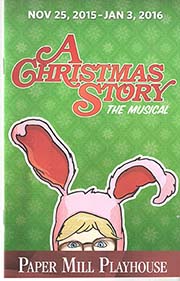 in it it, and some very good moments, and some very good actors. And Paper Mill os presenting about as good a production as one could hope for, given the material. The set is by Walt Spangler, who did the set on Broadway. The director, Brandon Ivie, does a good job in telling the story clearly. The production includes some people (like music director Ben Whiteley and young actor Colton Mauer, playing the lead role of “Ralphie”) who worked on the national tour; they know the show inside and out. But the show itself…. No. The pieces never quite come together the way you hope they will. The magic isn’t there. That happens with musicals sometimes. You can feel the effort that went into creating this amiable but only intermittently interesting show.
in it it, and some very good moments, and some very good actors. And Paper Mill os presenting about as good a production as one could hope for, given the material. The set is by Walt Spangler, who did the set on Broadway. The director, Brandon Ivie, does a good job in telling the story clearly. The production includes some people (like music director Ben Whiteley and young actor Colton Mauer, playing the lead role of “Ralphie”) who worked on the national tour; they know the show inside and out. But the show itself…. No. The pieces never quite come together the way you hope they will. The magic isn’t there. That happens with musicals sometimes. You can feel the effort that went into creating this amiable but only intermittently interesting show.
“A Christmas Story” is a very mild, gently meandering, generically nostalgic musical with occasional flashes of brilliance. The fantasy 1930s-nightclub scene in Act Two is inspired, and it is a wonderful high point of the show (just as it was on Broadway, where they had the added plus of a sensational young tap dancer who’s not in this cast). Benj Pasek and Justin Paul have come up with some winning songs; they are very good songwriters, and always come through with some rewarding numbers. I always look forward to their creations. But the show itself all-too-often reminds me of some contented old cow in a pasture, just chewing its cud. Much of the time, there’s not enough going on to compel my interest. And too often, it feels obvious, banal, predictable The kids in the show will do something; they’ll get into a little bit of trouble; but it turns out to be no big deal; the story continues, and…. oh my, I’m just getting sleepy thinking about it..
It’s the kind of show I wish I could love. Because the original source material is good. And because we all can relate to the essential story, about a boy’s simple Christmas wish (for a Red Ryder Carbine-Action BB Gun), the conflicts he faces with society (everyone tells him that with a BB Gun he runs the risk of shooting his eye out), and the father who has trouble expressing emotion but deep down really loves his kids and wants them to be happy. It’s a fine basic story. And gosh!–the very good actor playing Jean Shepherd (Ted Koch) gets a catch in his voice–choking up just a bit–at just the right time, in recalling his Dad. And we’re all supposed to choke up, too, I guess, at that moment, feeling nostalgic and warm, and folksy, and homey. And remembering the supposed good old days of our youths. But I didn’t. I simply felt like I was watching solidly professional actors in a paint-by-the-numbers musical that seemed to take awfully long to get to the key points. And could–and should–have been much better.
Joseph Robinette, who wrote the libretto, has tried hard to stay true to the popular original book by Jean Shepherd (“In God We Trust, All Others Pay Cash”), and the well-loved film “A Christmas Story”(written by Shepherd, along with Leigh Brown and Bob Clark). But the musical “A Christmas Story” is still another reminder of how very hard it can be to preserve what makes original source material great–much less improve upon it–when adapting a book or a film into a musical.
I was happy to see Elena Shadow (whom I adored when she starred in “The Sound of Music” at Paper Mill), playing the mother; she’s warm and tender and sympathetic. Danette Holden (who was fun in “Cagney,” Off-Broadway, at the York Theater) is perfection as the school teacher, Miss Shields. Chris Hoch was fine as the Old Man. I just wish these respected actors had better material to work with. Choreographer Mara Newberry Greer gets to pull all the stops out in the terrifically well-executed fantasy-nightclub scene; the audience loved it, and so did I.
Throughout the show, the child actors–who must shoulder so much of the weight in this show–do workmanlike jobs in their roles. But none of the young actors, alas, was exceptional; none was a standout, and at times I felt the lead was going through the motions.
I enjoyed some scenes in this musical a good bit; other parts I merely endured.
Young children, who have not yet seen a lot of theater and are more easily pleased, may well enjoy this production more than I did. (I have a hunch some of my younger cousins might like it just fine.) And Paper Mill, to its credit, offers Broadway-type production values at prices that are much more affordable than on Broadway (tickets start at just $32). Which may make this family-friendly show appealing for some families. Just don’t go expecting a great musical. “A Christmas Story” is nice. Sort of “musical-theater lite.” And for some people, that may be enough–a nice, amiable, non-demanding show, with occasional very good spots. But as for me… I’m in no hurry to see another production of “A Christmas Story” any time soon. We really need a first-rate new Christmas musical.
* * *
I almost didn’t make it up to see “The Nutcracker” this year. (And that’s long been a Christmas ritual for me.) I’ve been stretched so thin, and run so ragged, I almost passed. I’ve been working on a recording project that’s been taking a lot of energy. But I got in my car, drove the 230 miles round-trip to catch the Nutmeg Ballet Company’s Saturday matinee on December 20th at the Warner Theater in Torrington, Connecticut (they’re also presenting “The Nutcracker” at the Bushnell Theater in Hartford); I’m sure glad I did.
What a magnificent dancer Alexsander Keeperman is. (He played the Cavalier–the leading male role–at the performance I attended.) The clear standout of the performance I saw, he’s regal. He’s got star quality. He commands the stage from the moment he enters. I could have watched him dance all day; he’s really a born dancer. Galvanic.
Demeri Sutula’s carefree, rhapsodic dancing was a delight to watch; so free and easy, and playful. That wonderful sense of naturalness she brings to the stage draws us to her. Every move feels spontaneous. Timothy Dobbins–always an interesting dancer–added much to the program as well, as an irresistible (and witty) “Harlequin” in the First Act, and as the spirited solo Spanish dancer in the Second Act. Seasoned pro Thomas Evertz, as the mysterious Dr. Drosselmeyer, is perfection from his entrance to the curtain call (staying in character even in the curtain call, adding drama to the finish; I liked that).
It did my heart good to see Matanya Solomon dancing all-out after being pretty much sidelined as a “Nutcracker” dancer, due to injury, for the last two years. I greatly admire all good dancers for their dedication and hard work; but to not give up after being hampered for so long is extra admirable. And he was fun as the Grandfather, making the most of the part (and interacting well with others) in the prologue (staged by Victoria Mazzarelli and Tim Melady)..
I love seeing talented young dancers beginning to find themselves, such as sprightly Julius Taiber (as “Fritz” and a Russian dancer, moving with flair) and Benton Stivali (helping make “Marzipan,” with Saha Guzman and Erin Troost, choreographed by Joan Kunsch, such a treat). I happily watch the growth, from year to year, of such committed, longtime Nutmeg dancers as Grace Canfield (whom I saw as the “Sugar Plum Fairy”), Riley McGregor (the “Mouse Queen”), Jennifer Schwartz (“Snow Queen”), Kelsey Morris (in the “Arabian Dance,” with Covington Pearson).
I liked the new pumpkin-and-crimson-colored costumes worn by ballerinas in the “Waltz of the Flowers.” (The number itself seemed a tad under-rehearsed, compared to others in the performance I witnessed.) I enjoyed the ensemble work in the “Land of the Snow” (choreographed by Victoria Mazzarelli). And the endlessly falling pure-white snow added to the beauty of the scene. They did not stint on the snow! (Watching the snow fall down, I could not help but recall a regional production of one of my musical comedies, “The Seven Little Foys,” in which the producer–always trying too hard to pinch pennies–ordered the stagehands to use as little snow as possible in the finale, and to sweep the snow up from the stage after each performance so it could be reused; by the end of the six-week run, the snow had all turned depressingly gray, and I was wishing they’d cut the falling-snow effect altogether. But audiences always love seeing snow fall.) And the well-executed “Clowns” sequence, as always, scored an especially big hit with the children in the audience.
I wish I could have also stayed for the evening performance of “The Nutcracker” at the Warner Theater, if only to check out alternate cast members–such as the talented Andris Kundzins and Alma Evertz, whom I’ve enjoyed in other productions–in the leads. (I was sorry I did not get to see much of them in the performance I witnessed.) I like seeing alternate casts. (Last year, I was able to see two performances of the Nutmeg “Nutcracker,” as well as a completely different production of “the Nutcracker” in New York.)
After the Saturday matinee in Connecticut, I rushed back to NYC to catch a show that night that is not worth my wasting any ink on. But I’m grateful to the Nutmeg dancers for the joy they gave me. And someday, I know, I’ll be telling people, I knew Alexsander Keeperman when he was just setting started. And he had it even then.
* * *Speaking of star quality, and of performers whom I knew way back when, who had it even then… I was lucky enough to recently catch singer Seth Sikes once again at New York’s top supper club, Feinstein’s 54 Below. In the past year, every reviewer in New York seems to have discovered him, and I’m not sure what I can add to what’s already been written about him. But I’ll say this much–all of the good things that others are writing are true. Sikes, who’s 30-ish, is the best male singer of his generation on the New York cabaret scene.
He sings with love and joy, and confidence, and understanding. He has a light, playful touch, when that is needed. And he’s got lots of voice in reserve when very big singing is needed; then his voice just pours. And it’s terrific. The band backing him is excellent, by the way. (Mike Fahm’s warm trombone added much to the night, particularly on “The Man that Got Away”).
When I saw Seth Sikes last year, he was doing an act consisting entirely of songs associated with Judy Garland. And it was great. He’s currently also singing some songs he loves that Garland never had an opportunity to sing (such as Sondheim’s “Broadway Baby” and Irving Berlin’s “I Got Lost in his Arms,” to name two high points of the latest Sikes show), and proving he can handle all sorts of material brilliantly. The other night, he sang the best version of George Gershwin’s “Do it Again” I’ve ever heard–so languid, filled with such longing. He needs to record some albums. And get on “The Tonight Show,” Conan O’Brien’s show, and a few other such shows. And let more of the world discover what he’s got.
But Seth Sikes has always had it. I saw him when he first landed in New York, over a decade ago. I was lucky enough to have him in a show of mine, “Yankee Doodle Boy.” (He stole the show from the nominal star, and I wound up dedicating the published script to him.) He gave up performing to concentrate on directing, and worked on assorted shows, on and off Broadway. But he’s a born performer. He lights up any stage. He sells out Feinstein’s 54 Below. Next time he performs there, if you can get a seat, go! He’s as good as it gets, among guys on the current New York cabaret scene. And I’m very happy for his well-deserved current success.
I’m delighted that the historic Hudson Theater (on 44th Street, east of Broadway) is going to be restored to use as a Broadway Theater. That is wonderful news. This will be the 41st Broadway theater, and there certainly is a need. (All 40 Broadway houses are occupied at present. In the past season, Broadway racked up the highest total box-office revenues, and the highest number of tickets sold, in history.)I once wrote a piece in The New York Post calling for the return of this long-forgotten venue to Broadway theatrical use. (Built in 1903, it has not been used as a Broadway theater since 1968; in recent years, it’s been used as a hotel conference center.) It’s a beautiful vintage theater, in generally good shape, and the new management (England’s Ambassador Theater Group) intends to invest $10 million in renovating it so it can reopen in the 2016-2017 season.
The original owner of the theater, Henry B. Harris, lost his life on the maiden voyage of the Titanic. His widow made it onto one of the lifeboats and ran the theater for about two decades after his death.
The theater, incidentally, was a great favorite of Broadway legend George M. Cohan, who presented 10 different shows there over the years; he appeared at the Hudson Theater in productions of such shows as “The Song and Dance Man,” “The Tavern,” and “The Meanest Man in the World.” Plays by George Bernard Shaw and Henrik Ibsen made their Broadway debuts there, as well. The Hudson Theater served for a while in the 1950s as a TV studio–the first home of “The Tonight show,” among other shows.
Now if only we could reclaim for Broadway-theater use the Mark Hellinger Theater, the Times Square Theater, and the Liberty Theater–so much history in those vintage houses, as well.
On November 24th, the Landmarks Preservation Committee approved a proposal to lift the legendary Palace Theater 29 feet and move its Times Square entrance to a side street so that the theater’s valuable ground-floor space, fronting on Times Square, can be converted to retail use.
I hope this appalling–and unprecedented–proposal can be stopped. The Palace–one of the most famous theaters in the world–helps define Times Square. To relegate this New York institution to a side street, and put some chain store in its place at street level on Times Square, would be a slap in the face to all of us who love theater, and would speed the conversion of Times Square from something uniquely “New York” to a shopping mall that might be found anywhere.
The Historic District Council, which opposes the proposal, asked what will the public get in return, if the Palace is divorced from Times Square: “Perhaps a Red Lobster with a gift shop?” The proposal is still subject to peer review. And the owners of the property still have time to modify their plans. They seek to increase commercial returns on their property by putting in retail space not only at ground level, but on several addition levels, below ground, as well. Add retail space above or below the theater, if desired! But the Palace, as a unique temple of the theater, should be respected. And it should retain its current address.
If the current members of the Landmark Preservation Committee don’t understand the importance of the Palace, I recommend they read the committee’s original report (July 14th, 1987) when the interior of the theater was granted landmark protection: “If one theater in New York’s Broadway theater district were to be named most famous, the privilege would fall virtually uncontested to the Palace…. No other showplace has hosted a greater number of stars nor a wider variety of entertainment than this Broadway legend…. The Palace continues to help define the Broadway theater district, the largest and most famous concentration of legitimate stage theaters in the world.”
The Palace, in early years, was often referred to as the Mecca of entertainers; it was the goal of countless performers to someday “play the Palace.” Jack Haley (best remembered as the Tin Man in “The Wizard of Oz”) spoke for many when he said: “Only a vaudevillian who has trod its stage can really tell you about it… only a performer can describe the anxieties, the joys, the anticipation, and the exultation of a week’s engagement at the Palace…. A feeling of ecstasy came with the knowledge that this was the Palace, the epitome of the more than 15,000 vaudeville theaters in America, and the realization that you have been selected to play it. Of all the thousands upon thousands of vaudeville performers in the business, you are there. This was a dream fulfilled; this was the pinnacle of variety success.”
Giants of show business played there: Fanny Brice, Sarah Bernhardt, Will Rogers, Jack Benny, Eddie Cantor, Sophie Tucker, Mae West, Ethel Waters, Jimmy Durante, Ethel Barrymore, the Marx Brothers, Burns and Allen, Martin and Lewis, Harry Belafonte, Frank Sinatra, Judy Garland.
In Garland’s record-setting, 19-week comeback run at the Palace in the 1950s, she paid homage, via words and song, to greats who had played the palace before her.
Liza Minnelli did the same sort of salute to bygone greats associated with that iconic theater,
in her Palace run nearly a decade ago. Carol Channing long included an homage to the Palace (“You Haven’t Lived Until You’ve Played the Palace”) in her act. I could go on, but the point is clear. The space is important because of its history–the people who performed there.
For the past five decades, it’s been home to one hit Broadway musical after another; it’s a popular, prestigious house–currently the home of the hit musical “An American in Paris.” The Palace belongs in Times Square. The proposal to move its entrance to 47th Street will diminish the visibility and prominence of the theater; traditionally, theaters east of Times Square do not do as well as theaters on or west of Times Square.
“Broadway” helps define New York. And part of the pleasure of seeing a show at the Palace is feeling a connection with the past, the legendary performers who’ve shared that space over the past century. The space is steeped in history.
Many of us thought the Palace was permanently protected when its interior was given landmark status in the 1980s. And we thought other Broadway theaters, given similar status, were likewise saved. But if the Palace–an indisputable landmark of New York–can be raised 29 feet in the air, to make room for commercial retail space, what’s to stop developers from moving the other Broadway theaters in similar fashion (or even moving the landmarked theaters to other streets or cities) to make room for whatever stores or restaurants they think might generate bigger revenue flows in the “theater district”?
The drive to landmark Broadway theaters, which so many in the theater community supported, was not just to protect individual theaters, but to protect and maintain New York’s theater district. If the Palace is considered by commercial developers to be “in the way” of commercial development,” then no theaters are safe. In the “theater district,” theaters should have priority. And the Palace is as close to sacred ground as exists in the district.
I have a new album that I’ve produced, being released today–my 13th album. It’s the cast album of “Irving Berlin & Co.,” a musical play I’ve written (published by Eldridge Plays) telling the life story of the famed songwriter. The album is available now–being released just before Christmas–on Amazon, CDBaby, iTunes, etc.I’m delighted that some never-before-recorded Irving Berlin songs will be heard for the first time ever on this album.
Berlin was the single most successful songwriter in history. He wrote more hits and made more money than any of his competitors. In developing this show, I went through some 1500 Berlin songs, selecting a mix of well-known Berlin titles, such as “Play a Simple Melody,” “ The International Rag,” and “All by Myself,” along with some real rarities from Berlin’s trunk. Brian Vincent Grimaldi, on this album, is the first singer to ever record “They Call it Dancing.” Michael Townsend Wright and Cassie Pepe-Winshell are the first to record “In My Cozy Kitchenette Apartment”; Jonah Barricklo is the first to record “There’s Something Nice About the South.
Other numbers heard on the album include “Wild Cherries” (sung by Chloe Brooks, who previously starred in my Off-Broadway show “One Night with Fanny Brice”); “When I Get Back to the USA” (sung by Keith Anderson, who’s most recently been doing voiceover work for the Biography Channel); “Mandy” (sung by Betty Buckley Award-winner Emily Bordonaro); “We’re on Our Way to France” (sung by Peter Charney, who was in the original cast of my musical comedy “The Seven Little Foys” and is heard on the cast album of that show); “Down Where the Jack O’ Lanterns Grow” (sung by young Broadway/Hollywood veteran Matthew Nardozzi); and “Ragtime Violin” (sung by newcomer Jeffrey Sewell, whose YouTube work I checked out upon the recommendation of Broadway’s Andrew Keenan-Bolger)
Also heard on the album are Will Conard, Timothy Thompson, Jenn Spottz, Amanda Andrews, Katherine Paulsen, Hawkins Gardow, David Cook, Cody Jordan, Benjamin Grier, and Megan Ulan. Richard Danley is music director. Graphic design is by Frank Avellino. The recording engineer is Slau Halatyn, BeSharp Studios. The album’s stars–Emily Bordonaro, Michael Kasper, Keith Anderson, and Michael Townsend Wright–have been involved with “Irving Berlin & Co.” since its first reading at Ripley-Grier Studios several years ago.
This is the fourth album I’ve done dealing with Berlin. It follows on the heels of my cast albums for “Irving Berlin’s America” (with Giuseppe Bausilio, currently co-starring on the Family Channel’s TV series, “The Next Step”) and “The Irving Berlin Ragtime Revue” (with MAC Award-winner Carolyn Montgomery). The famously reclusive Berlin, who was fanatical about his privacy, said he did not want anyone dramatizing his life as long as he was alive. Since his passing, I’ve worked to develop shows celebrating his life and music. Berlin has always been–along with George M. Cohan, Cole Porter, Jerome Kern, Johnny Mercer, and the Gershwins–one of my all-time favorite songwriters. It’s a privilege to be able to tell his life story using his own songs.
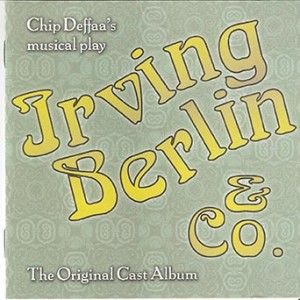
The show is inspired by a true incident. My late friend, singer/songwriter John Wallowitch, once organized a group of friends to serenade the elderly Berlin with his own songs, standing outside Berlin’s Manhattan townhouse on Christmas Eve. To the surprise of everyone in the group, Berlin–who had not been seen in public in many year–invited the singers into his home, serving them coffee and hot chocolate. He told the singers that was the best Christmas of his life.
In “Irving Berlin & Co.,” I used that true incident as a framing device, having Berlin share his life story–and two dozen songs–with members of the group. The setting for the show, and the cast album, is Christmas Eve. That’s why we’ve chosen to release this album right before Christmas–it’s a remembrance of Berlin, and of the late John Wallowitch. The group Wallowitch organized, incidentally, continues the tradition of singing Berlin songs outside of Berlin’s former home, to this day.
– CHIP DEFFAA

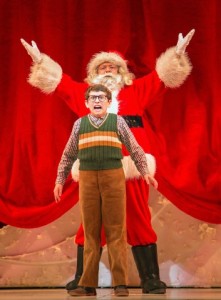
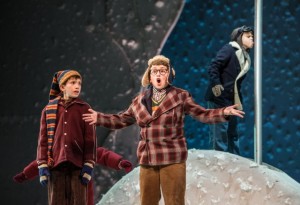
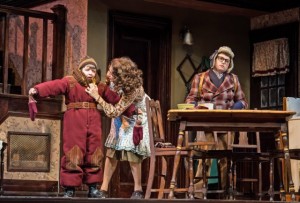
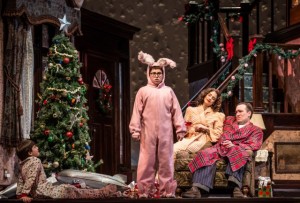
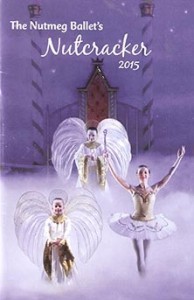
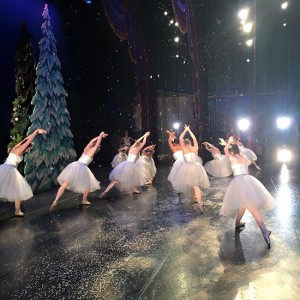
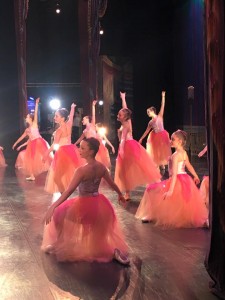
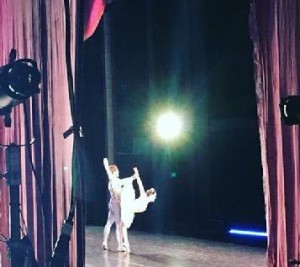
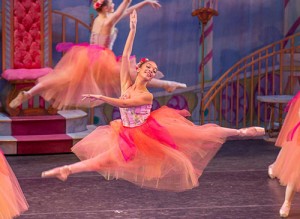


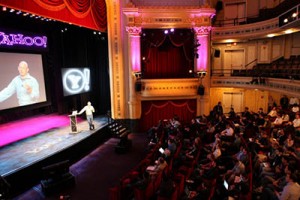
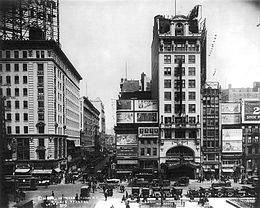
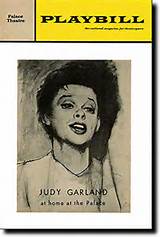
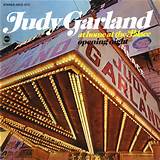
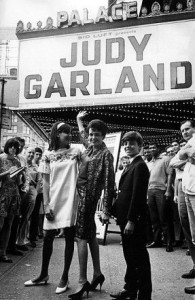
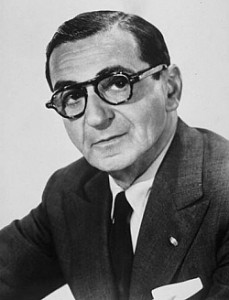
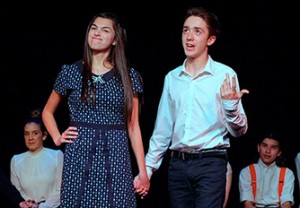





Leave a comment